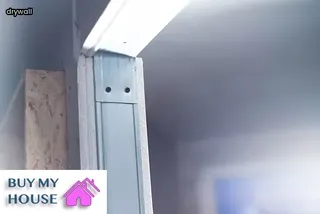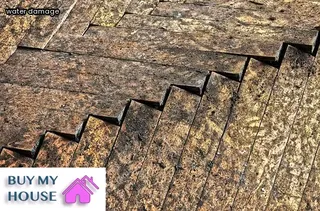Identifying the causes of wet drywall is essential for homeowners to determine how long their drywall can last before it needs to be replaced. The most common causes of wet drywall are water damage from plumbing leaks, flooding, and roof leaks.
If the leak is left untreated, the moisture can cause mold and mildew growth, which will ultimately weaken the structural integrity of the wall. Poor ventilation in a home or business can also cause condensation to accumulate on the walls, which can lead to deterioration over time.
To prevent wet drywall from developing, homeowners should check all pipes periodically for signs of leaking and ensure that any roof defects are fixed as soon as possible. Furthermore, proper ventilation systems should be installed throughout the home to reduce humidity levels and help keep moisture away from walls.
By taking these precautions, homeowners can help their drywall last longer and avoid costly repairs or replacements.

Mold growth on wet drywall is a serious problem that needs to be addressed. The length of time wet drywall can last before needing to be replaced depends on how quickly it can be dried out and how much mold has grown in the area.
Proper ventilation, dehumidifiers and humidifiers can all help reduce the amount of moisture in the air, which helps prevent mold from growing on wet drywall. Additionally, homeowners should check for signs of water damage such as discolored walls or staining regularly and address any issues they find right away.
Properly sealing windows and doors can also help keep moisture out of the home and reduce the risk of mold growth on wet drywall. Taking these steps and addressing any mold growth quickly is essential for ensuring your walls stay in good condition for as long as possible.
Wet drywall is a serious home hazard that can cause dangerous conditions for those living in the affected space. The presence of moisture and water can weaken the structural integrity of drywall, leading to major safety issues such as increased risk of mold growth, weakened structural support, and even potential collapses.
In addition, wet drywall can also lead to a significant decrease in indoor air quality due to the release of toxins from mold spores. Furthermore, if left untreated, wet drywall can lead to expensive repairs or replacement costs due to damage caused by rot and other forms of deterioration.
It is important to determine how long wet drywall will last before needing replacement in order to prevent unnecessary risks associated with this type of material.

Preventing damage from wet drywall is essential for maintaining the integrity of your home. To minimize the effects of water infiltration, ensure that all roof and gutter systems are in good repair.
Additionally, install a dehumidifier to reduce moisture levels in the air and keep windows closed during periods of high humidity. Additionally, be sure to fix any leaks or condensation issues as soon as possible.
Regularly inspect walls for any signs of dampness or discoloration, which could be indicative of an underlying issue. If you can detect these problems early on, you can prevent further damage and extend the life of your drywall.
Proper maintenance will help you maximize the life of your wet drywall before needing replacement.
Keeping your walls from getting too wet is essential in maintaining the longevity of your drywall. The best way to prevent water damage on your walls is to keep them as dry as possible.
If a wall does become wet, it is important to take action immediately and repair any damaged areas. Start by addressing the source of the moisture and make sure that it does not cause any further damage.
Once you have remedied the problem, you can use a dehumidifier or air conditioner to help dry out the wall quickly and efficiently. Additionally, giving your walls a fresh coat of paint or sealant every few years can help protect against water damage as well.
Lastly, sealing any cracks or crevices in the drywall can help provide an extra layer of protection and keep moisture away from your walls for longer periods of time. Taking these preventive measures will ensure that your drywall stays in good condition for many years and save you from having to replace it prematurely due to water damage.

When you discover wet drywall, the first step is to identify and address the source of the moisture. If it’s a plumbing leak, you will need to stop the water flow and repair the damaged pipe.
If there is no obvious source of water, you may want to consider getting a professional inspection from an expert in mold remediation or other home repairs. Once the source of the moisture has been identified and addressed, it's important to determine how long wet drywall can last before needing replacement.
Generally speaking, if the area remains damp for more than 48 hours, then you should replace the wet drywall as soon as possible to avoid further damage. If left untreated for too long, wet drywall can become structurally unsound over time due to mold growth and weakening of its support beams.
Additionally, when replacing wet drywall it's important to take steps such as wearing protective gear and using a respirator mask in order to protect yourself from potential health hazards caused by spores in affected areas.
When assessing the extent of damage from wet drywall, it is important to consider how long the wall has been wet, the intensity of the water exposure, and if there are any signs of mold growth. If your drywall has been exposed to water for a prolonged period of time or intense flooding, it is likely that the wall will need to be replaced completely due to structural damage or mold growth.
Even if you're able to salvage some of the drywall after a flood, you may still need to replace parts that were too greatly affected by moisture. It's also important to check for visible signs of potential mold growth on and behind your drywall as soon as possible.
If not addressed in a timely manner, this can cause serious health problems and further structural damage down the line. Taking these measures now can help ensure that your home remains safe and secure for years to come.

Replacing or repairing wet drywall is a dilemma that many homeowners and contractors face. The length of time drywall can last when exposed to moisture varies depending on the severity of the damage.
Lightly dampened walls may be able to be dried out and repaired, while heavily saturated walls will likely need to be replaced. In some cases, it may make more sense to replace the entire wall rather than attempting repairs.
It's important to assess the condition of the drywall thoroughly before making a decision so that you can determine whether repair or replacement makes more sense in terms of both cost and time.
When dealing with damaged drywall, it is important to consider when to replace versus repair. An essential factor in determining if a wall should be replaced or repaired is how long the wet drywall has been exposed.
If wet drywall has been exposed for an extended period of time, its structural integrity may be compromised and replacement may be necessary. On the other hand, if the wet drywall was exposed for a short amount of time, then repairs are likely to suffice.
In either case, it is important to identify the source of the water damage so that any future issues can be avoided. Furthermore, when repairing water-damaged drywall it is important to take steps such as removing any loose particles and applying a sealant before attempting to patch it up.
Additionally, choosing materials appropriate for repairing walls is crucial in ensuring that your wall looks and functions as expected. Taking all these factors into account will help you determine whether you should replace or repair your damaged drywall.

The signs that you need to replace your damaged drywall may not be immediately obvious, but there are some tell-tale indicators that it is time to take action. If you notice any visible cracks or buckling on the wall, these are a key sign that the drywall has been weakened and is in need of repair.
In addition, if you can see any signs of water damage, such as bubbling or staining, this indicates that water has infiltrated the drywall and it needs to be replaced. If you have noticed an increase in mold or mildew growing in the area surrounding your drywall, this could also signify that moisture is getting trapped within and deteriorating the material.
Finally, if you have areas of your home where you find yourself frequently patching up holes, cracks or other damages in the drywall then this could be a sign that the wall itself is too compromised to repair and must be replaced altogether.
Knowing when to call in a professional for repairs or replacement of wet drywall can be difficult. It is important to understand the lifespan of wet drywall and the potential damage that can occur over time.
Generally, if the area has been exposed to water for more than 24 hours, then it should be replaced as soon as possible. If there are signs of mold and mildew, then it is critical to bring in an expert right away as these can lead to serious health concerns.
Additionally, if there are any sagging or buckling areas, this could indicate a structural issue that requires immediate attention from a professional contractor. If you are unsure about the severity of the damage or when to call in a professional for drywall repairs or replacement, consulting with an experienced contractor can help you make the best decision for your home.

When drywall becomes wet, it can cause serious damage to your home if not taken care of properly. Replacing wet drywall is a time consuming and costly process, making professional repair the best option for dealing with the problem.
Professional repair services are experienced in identifying and repairing any water damaged areas quickly and efficiently. This ensures that they will be able to get your home back to its original condition without having to replace large sections of walls or ceilings.
Professional repair services also have access to better quality materials than can be found in stores, allowing them to create a stronger, more durable finished product that will last longer than DIY repairs. In addition, professional repair experts have the right tools and experience needed to guarantee that your walls look like new again.
Overall, hiring a professional repair service for wet drywall is the most cost-effective solution as it reduces the need for future repairs or replacements and keeps your home looking great for longer.
Painting over damaged, soaked, and/or moldy drywall can be done but there are a few things to consider first. If the drywall has been exposed to water or moisture for an extended period of time, it may need to be replaced as it could have weakened structurally.
To determine the extent of damage, assess the area carefully and check for signs of mold or mildew growth. Additionally, you should make sure that any wetness is completely gone before attempting to paint over the drywall.
If not, this could lead to further structural damage or even cause health issues if mold or mildew spores spread through the air. Furthermore, you should also consider how long the wet drywall has been in place and if any repairs have been made prior to painting as this may affect its longevity as well.
Yes, drywall can still be good if it gets wet, but not for long. If drywall is exposed to moisture for an extended period of time, even if it appears to be structurally sound, it should eventually be replaced.
This is because the paper backing and gypsum core of the drywall can break down over time due to water damage and mold growth. In addition, water can also cause the adhesive holding the joint tape and corner beads in place to weaken, resulting in a weakened structure.
The amount of time it takes for wet drywall to deteriorate depends on the severity of the water exposure and how quickly repairs are made. It's important to address any moisture issues as soon as they occur so that further damage isn't done.
Ultimately, it's best practice to replace wet drywall before any major problems arise.

Water damage can cause drywall to deteriorate quickly, making it important to act fast if you discover that your walls have been exposed to moisture. The amount of time wet drywall will last before needing replacement depends on many factors, including the extent of the water damage, how much moisture is present, and the type of drywall used.
Drywall exposed to a lot of moisture for an extended period will need to be replaced sooner than drywall with minimal water exposure. Additionally, greenboard or cement board drywall is more resistant to water damage than gypsum board and will generally last longer.
To ensure the integrity of your walls, it's best to replace wet drywall as soon as possible.
Drywall is one of the most common building materials used in homes and businesses, but when it becomes wet for a long period of time, it can start to grow mold. This can be an unsightly and unhealthy problem.
Knowing how long drywall can be wet before mold starts to grow is essential for any homeowner or business owner trying to protect their property from damage. Wet drywall provides an ideal environment for mold growth, as warm temperatures and moisture provide the necessary conditions for spores to flourish.
The length of time wet drywall will last before needing replacement varies depending on how much water it has been exposed to. In general, if wet drywall stays wet for more than two days, it should be replaced, as mold growth usually begins soon after that point.
Additionally, any areas where water seepage has occurred should be inspected regularly to ensure that no mold is growing on the walls. Taking preventive measures such as these can help keep your home or business safe and healthy.
If you find that your drywall has become wet, it is important to remove the excess moisture as soon as possible in order to prevent any lasting damage. Moisture can be removed from drywall by using a dehumidifier, air conditioning, fans, or open windows.
It is also important to thoroughly dry any wet areas of the wall with a towel. If the wall is still damp after these steps have been taken, you can use an electric heater for a few hours to further dry it out.
After the wall has dried out, you can apply a primer and paint to seal it and help protect from future moisture damage. Knowing how to properly remove moisture from your drywall can help you avoid needing to replace the entire wall due to water damage.